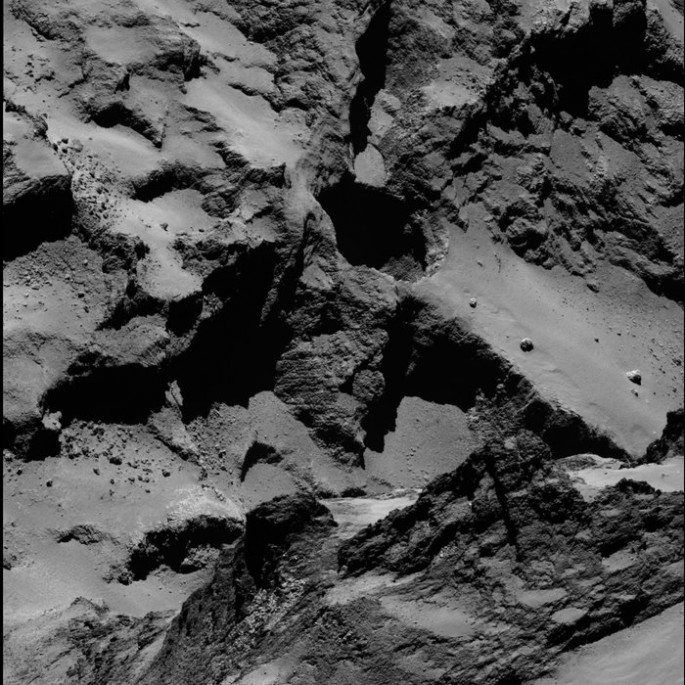New data from the European Space Agency's comet chaser Rosetta spacecraft reveal that comet apparently have sinkholes similar to those of Earth's which also challenges the idea about icy comets and their compositions.
The Rosetta spacecraft is currently orbiting comet 67P/Churyumov-Gerasimenko where it has been studying the terrain and composition of the comet since August last year.
Comets apparently form their distinct tails from the material they spew from their icy bodies which is aggravated by the pressure emitted by the sun. Scientists believe that this gas emission that includes dust and other particles occur all around the comet however these new findings show that this material that causes Comet 67/P's tail, apparently originate from sinkholes.
Rosetta's OSIRIS camera captured this phenomenon where this marked the first time that sinkholes are seen pockmarking a comet's surface. To date, astronomers have recorded 18 of these unique features on the northern hemisphere of 67/P where they seem to emit material out of space.
According to Jean-Baptiste Vincent from the Max Planck Institute for Solar System Research, from these pits, we have seen jets of material that are rising from these fractured areas. These fractured regions signify that there are volatiles that are trapped under its surface where they are warmed and eventually escape into deep space.
These sinkholes measure around 700 feet in diameter and could run up to 650 feet deep. Astronomers believe that they were likely formed when subsurface cavities went collapsing and created a hollow structure underneath.
With this cave like region under the comet's surface, the solid material of the comet begins to subliminate and turn into gas. This process encourages erosion where this ultimately makes the sinkhole grow larger.
According to Sebastien Besse of the European Space Agency (ESA) European Space Research and Technology Centre (Estec), the collapse that produces the pit appears to be sudden where the cavity inside the porous subsurface may have been growing over a long period of time.
This new study is published in the journal, Nature.



























